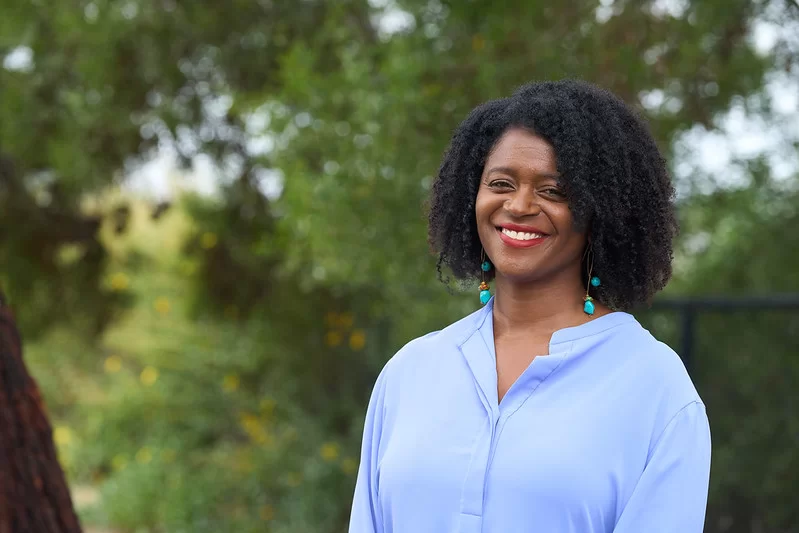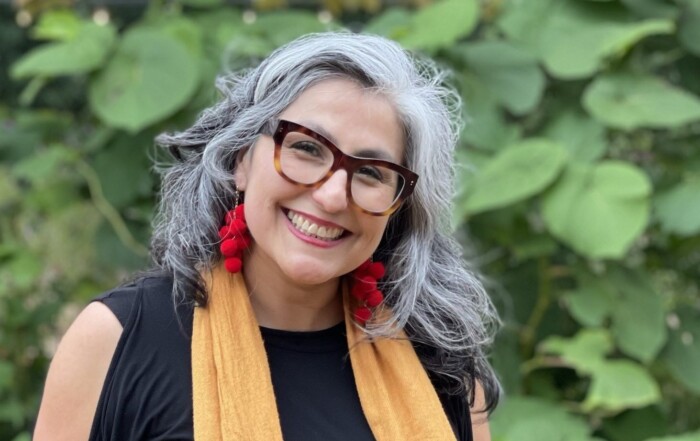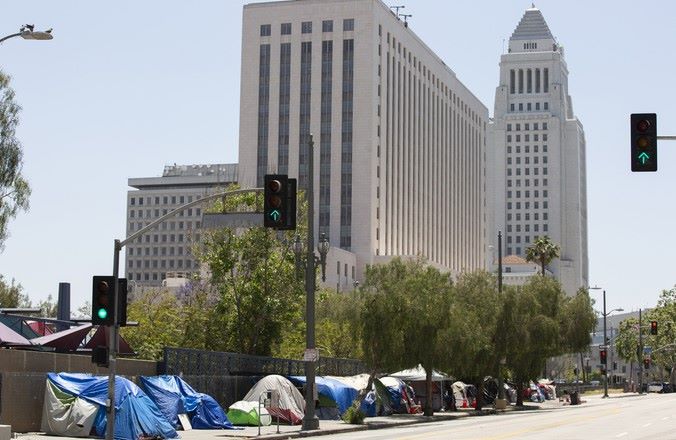The newly drawn 28th State Senate District is an open seat due to State Senator Sydney Kamlager’s run for a Congressional seat that shares much of the same area — which includes Culver City, Ladera Heights, Mar Vista, Palms, over to South Central L.A. and West Adams.
The two candidates for the 28th are Cheryl Turner and Lola Smallwood-Cuevas. We put in a request to talk with Ms. Turner a couple of months ago, but only heard back from her on October 1. In the meantime, please enjoy the interview we conducted with Ms. Smallwood-Cuevas:
Todd Flora (Publisher, Westside Voice): (I lead with an explanation of the origins of Westside Voice, how I got here, and then I ask…) First off, I would love to know a little bit about your own background as a journalist.
Lola Smallwood-Cuevas: You know, as you were speaking about your journey, it got me thinking a lot about my years of reporting.
TF: Can you tell me a little bit about how you got your start? What subjects did you focus on? I know it kind of led you to the labor movement if I’m not mistaken.
LS-C: It did. You know, I grew up at a time, in the ‘90s, when there was sort of a Renaissance before the total transition of particularly print journalism. There was a moment called “Newsroom 2000” where the goal was to double down on public journalism models and to strive for a diverse and inclusive press. There was a sense that the role of journalism was to give folks the tools they needed to make democratic decisions and control their destiny and make decisions in this society.
I’ve always been very captivated by the role of the First Amendment and how little information was written about my community as a young, Black person who would see the news every day but had no idea how it was made and how to tell the kinds of stories that reflected my community. So, this movement was happening at the same time I was in college, and at the time there was a lot of activism around ethnic studies. And the need for inclusion in both our story both historical and in modern and political events that were happening in our lives – you know, I was really drawn to journalism. I was drawn to that movement.
Little did I know that 15 years later that there would be a complete transformation of the print industry. There would also be a sort of corporate takeover over newspapers that would be consolidated. There would be layoffs of copy editors and journalists, really consolidating the industry, in a way, that did great harm, I think, to the principles of the First Amendment but also that whole movement to go deeper into public journalism that really connected to communities but also allowed communities to prioritize and participate in those kinds of stories.
I believe communities in a democracy have to have all the tools to make a choice in the decisions they need to make; that it’s a participatory process.
Editor’s Note: Ms. Smallwood-Cuevas then spent a few moments sharing with me that she worked at the Oakland Tribune, Long Beach Press-Telegram, and the Chicago Tribune, among other assignments.
LS-C: (continues) I decided I wanted to come back to California [following the Chicago Tribune] and I had the opportunity to work with a friend – a seasoned veteran journalist that I worked with at the Press-Telegram – who was working on a research project for the SEIU [Service Employees International Union], and I helped her with that project. And I just really fell in love with the stories that come from people, and stories that could change. I had a chance to work as a researcher.
TF: You identify as “a daughter of labor” and I really liked that phrasing on your campaign website. How do you think a labor background will benefit the way you operate as a legislator?
LS-C: One of the things I’m really proud of working in the labor movement, as a researcher, organizer, then as a labor researcher at UCLA and a labor educator there – and then helping to develop a whole new format of community engagement through worker centers the [UCLA] Labor Center, launching California’s first Black Worker Center, a model recognized by President Obama. There are now three worker centers in the state and 15 across the country. It really is a collective process. And I think that’s what the parallel is with policy making. It doesn’t come from the mana on high it comes from the bottom and real-life experience. It comes from expertise that you pull together into an understandable platform of needs and an understandable slate of solutions, and then you fight for those things. I think that is what ultimately policymaking should be. It should be a collective process; it should be informed by research; it should be formed by experts that have lived experience. Then it’s a listening process to hear all of those perspectives and come out with solutions we can collectively fight for.
The thing I appreciate about unions is they are simply organizations made up of people who have an infrastructure for decision making; an infrastructure that is a democracy and they prioritize needs and a set of solutions and they work together to make them happen for the collective. I believe that when workers do well, our communities do well. That has been, historically in this country, a marker of our progress and our greatness.
TF: You’ve called homelessness “the moral crisis of our time.” Do you have a position on L.A. City Ordinance 41.18 that has sparked so much controversy? This is the ordinance that bans camping in public thoroughfares and was recently amended to a distance of 500 feet from any school or daycare center.
LS-C: I do. We can’t criminalize the poor. That’s number one. Is it inconvenient to see what I describe as ‘Hell on Earth?’ It’s right there before our eyes when someone is in that desperate a situation. The answer is not criminalizing, but building the kinds of programs that move people from the street into the housing and service system that they need to be able to rejoin society in a way we would want them to and create an environment that keeps us all safe. Whether you’re a homeless person or own your own home, both deserve the same level of support and resources to make each feel safe and secure. So I’m opposed to that kind of criminalization; I’m opposed to those steps.
However, we have to be real about the crisis. With the same urgency we’re passing these ordinances we have to prioritize the development of housing; the investment in housing; the extension of moratoriums on evictions; the extension and expansion of rent control to apply to all kinds of housing. I appreciate the work that’s taken place in places like Culver City to specifically look at how we create and build affordable housing. How do we support tenants? How do we provide assistance to renters, homeowners, and property owners? Those are some of the solutions that the state has come up with and I think those are some of the solutions we need.
TF: Let me jump to my next two questions, then, because they are both on housing. Would you categorize yourself as being among the folks who call themselves “abundant housing” advocates? These are the folks who say, ‘Let’s build it all, at all income levels.’ Or do you favor a more targeted approach to affordability?
LS-C: Well, we have plenty of luxury housing and from where I sit driving through my district, they’re empty. The ‘For Lease’ and ‘For Rent’ signs are all out on luxury housing. People who work for a living – and I’m talking about teachers, I’m including health professionals, all the way down to the fast food worker – are not going to be able to afford those luxury rents. I think we need to press pause on luxury housing. I think we need to focus on housing for the masses, and right now that’s affordable housing, that’s social housing, that’s worker housing, that’s permanent supportive housing that provides services to folks who need it.
I believe there’s a time for abundant housing but now is not the time. We need to pause, and we need to address the crisis. We also need to be real. Housing doesn’t happen in a vacuum. We’ve got to put housing with jobs. We’ve got to create good jobs. And I’m talking like a works program-level kinds of jobs to build the housing we need. You know, there was a moment we believed in public housing. We’ve got to look at these reactionary policies like Article 34, which were passed in the 1950s, to really keep our communities divided. We need to go back to those policies and create a public housing stock that will help us arrest the crisis of poverty that is now manifesting itself in the levels of homelessness – and also folks who are at risk of homelessness.
TF: Forgive this next question – it’s a very leading question in terms of being able to tell what I think the answer should be – but in this latest Regional Housing Needs Assessment (RHNA) cycle, the numbers of housing units called for are dramatically higher than in the past. Some are considering what’s being demanded of cities to be a bit of an unfunded mandate. So do you think the state has a responsibility to bear more of the cost of ensuring this level of affordable housing gets built?
LS-C: We have a moment where our Federal Government is working with our state, and looking at all the various issues and crises we face. So the state is a pass-through for Federal dollars, helps prioritize those dollars, and helps prioritize the dollars toward the working people of California. So the state plays an important role in investing in those solutions that will address, abate, and turn around the different crises that we have – be it jobs, be it environmental, be it housing, the state plays that very important role. So I think the question was does the state play a role in investing in the development of housing in communities, and I say absolutely yes. It is the role of the state to have the broadest lens in how we invest in housing but asks how we do it in a way that creates long-term sustainability and long-term solutions.
TF: What is your position on the size of the LAPD — in terms of increasing the number of officers?
LS-C: 50 percent of the City’s budget is focused on police and policing services. And I don’t see state prisons capturing more of our tax dollars than workforce development. I think we have to redefine what safety is and having organized in South L.A. for so many years if it was just about the number of police, South L.A. would be the safest place on Earth – but it’s not. I work at UCLA, you know, I work in Westwood – and I don’t see the level of police presence in that community. What I do see are thriving businesses. What I do see are corporate headquarters like the University of California, creating tens of thousands of jobs. What I do see are transportation routes. What I do see is educational institutions. What I do see are programs for young people. What I do see are families that have economic stability and generational wealth.
So when we talk about safety, I think we have to get real about what makes a community safe. And that’s what I love about the 28th [State Senate District]. We have examples – so let’s look at where we have the deficits in one community of the things that make it safe. Let’s say we have enough police, but we don’t have enough housing, or enough good jobs. Let’s put the money into those safety measures. We’re in the middle of a cultural revolution. It’s not like the 1970s because we have the internet, so it doesn’t feel as sharp and clear as it was in the 1960s and 1970s but we are in a cultural revolution and the 20th-century models of traditional police safety just do not work. The traditional models of incarceration and criminalization do not work. The people of California and the 28th have been very clear: we want to look at new models that will work. I want to work with our community on what those ways are and I believe we need to work with our safety community to ask how we have a just transition.
Do we put a premium on policing? Police officers are some of the highest-paid, if not the highest-paid, public servants in our county. Every year the police get their full budget, right? I don’t want to make these workers the poorest workers, but we need to readjust, to realign to a just transition where those positions help build up our community. I believe 50 percent is just too much, and I don’t think we’re looking at the real things that make our communities safe.
TF: What will the level of difficulty be in closing the Inglewood Oil Fields? You know – what are the steps? How long do you think an effort like that will take?
LS-C: Well, I think we’re already starting. I think it goes back to this question of conversation and discussion. I am a proponent of “cap, clean, and play.” I think South L.A. is park poor, and what’s been happening through the great work of Holly Mitchell, Senator Kamlager, and the Baldwin Hills Conservancy we are building one of the most fabulous parks that California can certainly be proud of. And we’re building it in South L.A. and I think we have to focus on making it more accessible to our folks in South-Central and other areas. We need to do it in a way that’s environmentally friendly and creates a resource for that community. We don’t have an outdoor theater; we don’t have an amphitheater; we don’t have a lot of outdoor dining; we don’t have a lot of recreational, full-service programs for the youth in this community. So I believe there’s so much that can be done in this beautiful, beautiful area that we are growing – the Baldwin Hills Greenbelt – and we need to prioritize that. Well, what will that need? We will have to work with our partners to make sure we’re doing all of the remediations and clean-up, repurposing, and investing in that. Certainly, South L.A. deserves it and we need parity.
The other thing is we are striving toward a fossil-fuel-free California. I’m so excited about how California led the way to turn around our environmental mess up and here in Southern California create a model for what a green society can look like. I am convinced the Inglewood Oil Fields will be a crown jewel of development. And we have to begin that phase out and bring all parties to the table and the resources that will prioritize that.
TF: Have you received endorsements from any of the candidates that didn’t make the November 8 runoff?
LS-C: I did. I received the endorsement of Jamaal Gulledge, who was an opponent in the race. Patrick MacFarlane, who was initially in the race but dropped out early and lent his support. I’m working to reach out to Kamilah Moore, who is – in a number of different spaces I’m actually having a hard time finding her (chuckles). But we are reaching out to get support and want to make sure we have the strongest campaign possible.
TF: You seem to have cornered the market on endorsements from all the top elected leaders to labor and community leaders. On the other hand, Ms. Turner doesn’t seem to boast of any – at least I don’t see any on her website. Based on the process of elimination – what you have and she doesn’t have, or you don’t have – how do we characterize your runoff opponent? Is she business’s candidate?
LS-C: She doesn’t really have any endorsements in this race, and I have over 70 individual and organization endorsements in the race. And you know, I’ve been in the field for a long time, and working across different group interests and bringing people together for a long time, which is a testament, I think, to why I have the level of support. I’m really proud of my coalition, and I think we need to hold this coalition together to win what we need to win when we get to Sacramento. So I’m proud to be at this point in the race.
I can only say that my opponent – she’s run for a number of offices. Some have characterized her as a professional candidate. When I entered the race, I was not familiar with her. I know she filed [to run] in this race and she had also filed to run in Senator Kamlager’s Congressional race, so it wasn’t even clear which office she was running for. I know she comes out of the Howard Jarvis taxpayer’s movement. I understand she is a representative of the Apartment Owner’s Association. So I can only stand on my record. I can only stand with the people standing with me and my vision for what I think needs to happen in the 28th and to be honest, I think my capacity to work in alignment. And I’m so honored to have the endorsement of Supervisor Holly Mitchell, Senator Kamlager, Congresswoman Karen Bass, Assemblymember Isaac Bryan, Assemblymember Reggie Jones-Sawyer – all of these folks because we have to work together. For me, this isn’t just about endorsements. It’s about who is going to be an ally and who can deliver what we need for the 28th and who I’ve had the honor to work with over the years. They know who I am, they know what I’m about. And I’m about the work of building. Building solutions for our communities, particularly communities that need the most. And in our district, that is Black, immigrant, indigenous, and undocumented community members. I believe when we lift the bottom, we all elevate.
I will be the only Black woman in the California State Senate.
TF: Oh, my God – is that right? That’s terrible.
LS-C: Isn’t it? In 2022! It is terrible. And that’s why having the right voice is so critically important for our communities who need us the most. So I’m honored. I’m honored Senator Kamlager tapped me. I love what I do. I love organizing. I loved establishing the UCLA Center for the Advancement of Racial Equity at work. It’s my dream to see us build a stronger California that’s united and lifting up the most vulnerable. Using smart, data-driven analysis to make those kinds of decisions.
I want to have the Westside’s support so that I can be that voice for the Westside in Sacramento.
Campaign Website for Lola Smallwood-Cuevas: https://lolaforca.com/
Photo Credit – Lola for CA Website
Stay informed. Sign up for The Westside Voice Newsletter
By clicking submit, you agree to share your email address with Westside Voice. We do not sell or share your information with anyone.








